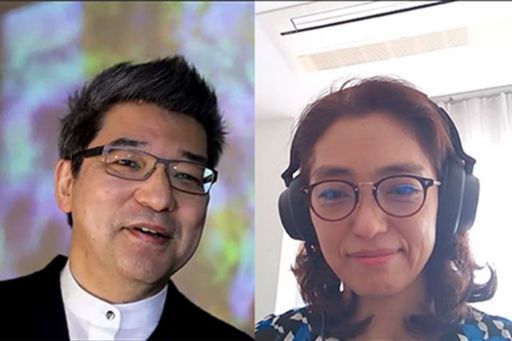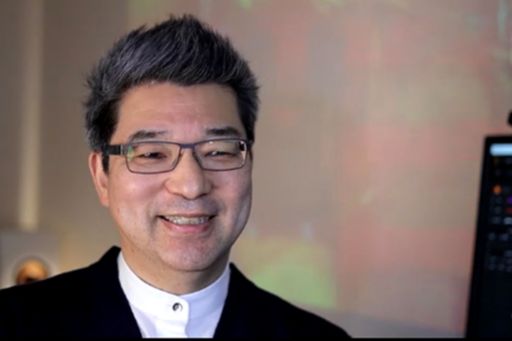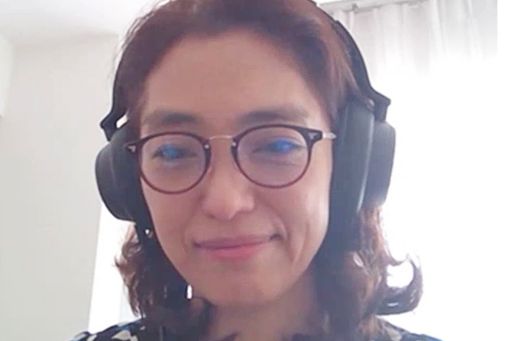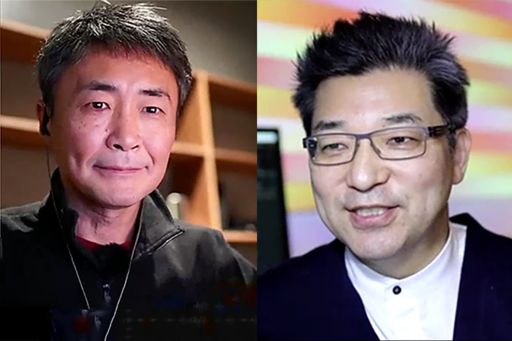Digital transformation is taking place not just at companies but in society as a whole. Companies are allocating considerable resources to realize digital transformation while the government is establishing the Digital Agency to digitalize administrative procedures and realize a digital society “that does not leave anyone behind.”
In order for the benefits of technology to reach a wide range of people, what kinds of ideas and viewpoints will be necessary? Also, with what kind of awareness should companies promote their initiatives?
In this article, we will introduce the discussion on these issues conducted between Masayuki Chatani from KPMG Ignition Tokyo and Hiroko Sasaki, who is successfully working as President of both ChangeWAVE Inc. and Lyxis Co., Ltd.
It May Be Possible to Change Social Awareness with Cutting-Edge Technology

(Masayuki Chatani, Representative Director & CEO of KPMG Ignition Tokyo and CDO of KPMG Japan (left) and Hiroko Sasaki, Founder and CEO of ChangeWAVE Inc. & Lyxis Co., Ltd. (right)) *Professional affiliation and official position in the article are at the time of publication.
Chatani: You mentioned that you provoked ripples of change with the “Eijyo College” project but please tell us about the initiatives of Lyxis.
You have a vision of “realizing a world where everyone can shine” by utilizing cutting-edge technologies such as IT and AI. You have also announced “LCAT,” a work-care balance support program, as one of the elements for realizing your vision. When we saw this announcement, colleagues from the Sony days including me were saying, “we will probably be receiving the assistance of Sasaki-san’s company someday.”
Sasaki: Well, when I thought of what kind of transformation is needed the most in Japan as a transformation designer, I realized that many people including me have almost no information literacy regarding “old age” despite being in a society which is by far the most super-aging in the world, and I felt an intense sense of crisis. I came to the conclusion that “aging literacy for balancing work and nursing-care is what is the most important” and this led to the establishment of Lyxis.
To live in a society with more elderly people than ever, everyone who is aging (including us) as well as their families and people around them need to have literacy regarding old age and understand the diverse options for accommodating this.
Otherwise, it will not be possible to extend the healthy life-span that can be extended under ordinary circumstances, and we will not be able to use systems or receive necessary care services when the need arises. We are hoping that the “LCAT” learning tool will support this even in some small way.
Chatani: It is important for those who are aging to be involved themselves. Cadillac is an example of the significance and positive impact of the proactive participation of people in an aging society.
Primarily, the buyers of this car are considered to be a little older with time to spare and want to enjoy driving and life itself. However, as the young designers were pursuing something “new,” there seemed to have been a period when sales were stagnant.
I heard that when they took the approach of “revamping” the designers to be closer in age to their target customer segment of over 60 years old, their sales grew considerably.
The same goes for apps such as learning tools. Apps that were created by young people may not necessarily be convenient for elderly people because in many cases, user interfaces such as the size of characters and screen layouts need to be considered from the perspective of the users’ ages.
Sasaki: I think the same can be said with the advice for extending the healthy life span.
Take “how to eat and take nourishment” for example. While it is said that young people need to take measures to combat metabolic syndrome, it is important to advise elderly people to avoid undernutrition so that they can maintain their muscles and keep their mobility.
Chatani: This means that there is information that is necessary specifically for the elderly and that it is not necessarily good to convey the same “health information” to everyone. Does this mean that we can learn about these things with “LCAT”?
Sasaki: That’s right. For instance, the fact that dementia starts with adolescence is “common sense” in the field of healthcare involved in dementia, but this is not very well known among the general public. Also, when elderly parents require assistance or nursing-care such as when they break their bones, many people think of “going back to their parents’ home to provide support. However, receiving the support of nursing-care professionals is said to put less of a burden on the family and shorten the time required for parents to return to their normal lives. It is also known that not being able to provide correct care may have the adverse effect of increasing the level of care in later years.
There are many things we need to know to live in this super-aging society. However, as needs are not visible and also because of normalcy bias or stereotypes that make people believe that “they will be ok,” it is quite difficult to accept “old age” head-on. The objective of developing “LCAT” is to break through such beliefs.
Chatani: I see. However, the situation has changed with the COVID-19 pandemic and some people point out that it has become easier to continue working while caring for parents.
Sasaki: In fact, professionals see that there is a huge trap in this way of thinking. For example, if family members return to their parents’ home to provide support because they can work remotely, there is a risk of the family members working too hard without having the necessary technical knowledge or knowing about the service systems they can use by right.
For instance, they tend to provide too much assistance when it is actually better to encourage the autonomy of those being cared for. It is also said to be difficult for family members to care for elderly people with dementia, even for professional caregivers. In addition to the heavy psychological burden, there is a risk that the caregivers’ mental state may accelerate the symptoms of the elderly.
“LCAT” is a tool that enables people to acquire the “minimum knowledge that is good to know.”
Chatani: That’s true. Even if high-level nursing care is not necessary, we are tempted to help our parents when we see them having difficulty trying to do something.
Actually, my grandfather had dementia. The word dementia was not known at the time but our family was shocked at the reality that he remembered me but not my younger brother. I can therefore imagine that even professional caregivers want to avoid caring for their own parents.
Sasaki: That’s right. There are also public services that cannot be used if family members live in the same house because they can work from home. Such information literacy can easily be enhanced in a short period of time by using “LCAT.” As this is a subject that many people do not want to learn voluntarily, we dare to push users of “LCAT” to learn. It is an ultimate busybody tool.
Is It Possible to Incorporate High-touch Communication with Warmth into AI and Technology?
Sasaki: I would like to ask Chatani-san a question about the current state of AI. At Lyxis, we started a service called “Busybody Cat,” where parents and children “take care of” a LINE chatbot called “Tama.”
Tama goes to the parents’ place every morning to chat with them and then goes to the children’s place to report on their parents. It is designed so that users can learn spontaneously about how to extend their healthy life span and about dementia and frailty. For instance, Tama the cat tells parents that “muscles are very important” and asks them, “Can you put your socks on while standing on one foot?” Tama then conveys the answers to the family members later in the evening.
There are various questions such as, “what do you want to do before you die,” which are asked in the communication in a natural manner. We are getting good responses to the service, as about 70% of the messages are currently being read.

However, behind the scene, the team of scenario writers including me are extremely busy writing scenarios every day. It is indeed like creating a role-playing game or a daily publication medium.
Currently, we are only able to provide AI responses at the end but I wonder if it will be possible to fully utilize AI from the beginning to the end with advances in natural language. Or will human beings have to work on the details after all? I have often found myself thinking about these things recently.
Chatani: That sounds very interesting. It may be possible to create an AI program from the records of potential users. While it doesn't seem to be many at the moment, it may become possible if you can collect 10,000 to 100,000 words of information you want to ask.
Generation-type AI programs have been appearing especially since around 2020. For example, an AI program called “GPT-3” even prepared a press release announcing its own development and I heard that the reporters who read the release did not find anything strange about it. It is becoming possible for AI to create articles that are formulaic such as weather forecasts and news articles taken from corporate announcements and business performance reports. Furthermore, creative-type AI programs that create stories are already appearing now.
As it is said that literature throughout the world can be broken down into patterns, if Tama’s conversation types can be typified, it may be possible to create a fully-fledged AI program by processing the Q&A that applies to it so that it is not out of context.
When developing an interactive chatbot, narrowing down the questions posed by the other person and devising them so that the UI and expected answers fall within the scope of assumption may hold an important key.
However, in the case of the chatbot provided by Sasaki-san, it is conceivable that the answers are not necessarily foreseeable and are beyond the scope of assumption. Generally, a process is implemented to “return to the start of question” but in this case, I don’t think it will sound right. This may be difficult to deal with.
Sasaki: You’re right. There are also people who want to continue talking with Tama even after the conversation ends. There are more people expecting spontaneous conversation. Only human beings can do that now. We are now discussing the need to simplify this part.
Chatani: I see. However, it is a relief that the character is a “cat.” The accuracy of responses required of human-type robots and other robots is said to be different. We tend to complain, “why can’t I get a correct reply” to human-type robots but we can become quite tolerant if they are dogs or cats.
Sasaki: What I can say for sure is that because elderly people’s affinity toward IT has been increasing in recent years, there is great potential in this approach to learn something or advance toward goals by communicating with chatbots.
Chatani: That’s true because people who were in the golden years of personal computers have been retiring in recent years. I don’t know about smartphones but I think there are only a few people who “have not touched computers until they retired.”
Sasaki: This is making it easier for them to clear the mental hurdle of utilizing IT tools and this is also enhancing the possibility of digital technology.
Their communication with Tama is an extremely emotional area and there are situations where “they can talk with Tama about things they cannot talk about with their children or grandchildren.” I feel that there is great potential for digital technology in this area. We even received feedback from children such as that they had never imagined that their parents wanted to skydive. There are also things people cannot talk about if the other party is a “person.”
Chatani: The fact that people do not ask for unreasonable favors or negotiate with AI programs may also be one of the reasons.
Sasaki: That’s true. In fact, when we made up a story that "Tama has the flu” and distributed it through LINE for 10 days, we received many heartwarming messages and voices from people who were really worried.
Chatani: Surprisingly, there seem to be many responses like that. I heard that at Sony, the repair factory for Aibo is special and that gifts were delivered in summer and winter “thanking them for repairing Aibo.” If this was a VCR, customers would complain that “it has broken down so fast!” but they are very grateful when their Aibo is repaired. They seem to consider that Aibo “is a living being.”
In the case of digital technology, there was a time when the act of “sending emails” was expressed as “the PostPet delivers emails to the recipients” a long time ago. I heard that as the PostPet does not return until the recipients open the email, the owner of the PostPet (the sender of email) would worry that “it has not returned” and send the email again.
It may be that this form of high-touch communication being incorporated and breathing life into technology is being preferred by people, which can be seen in the behavior of people worrying about Tama having the flu.
Technology Will Resolve Loneliness and Help People to Live with Autonomy

Chatani: We have discussed the “utilization of technology required in the post-COVID-19 age” and “future digital management” with actual case examples. Let’s now expand our discussion a little bit to the future.
How do you think technology will be incorporated in society and influence people’s lives 50 years from now?
Sasaki: I believe that the use of technology will get rid of loneliness. After establishing Lyxis, I listened to many doctors who talked to me about what is good for your health. What was commonly mentioned by everyone was “association.”
Even if people are physically healthy, their body will weaken and they will not be able to move physically or mentally and will eventually lose their energy if they do not have any association with others.
Opportunities where we can actually feel associated with others are decreasing nowadays but being able to associate remotely is one of the benefits of technology. Also, if Tama can stay close to a person, even if nobody else is around, it may serve as a form of social engagement. In this sense, I am hoping that digital technology will be incorporated in society in a way that it will get rid of loneliness.
I also hope that digital technology will contribute to realizing a “lifestyle one wants to live.”
Specifically, this may mean that digital technology will be doing other tasks more productively or that digital technology will support the feasibility of this. I hope that digital technology will move in this direction.
Chatani: From the standpoint of an executive, how do you think digital technology will change going forward?
Sasaki: Well, I think that various things will be visualized with digitalization and technology. I also think that organizations will change in a “self-sustained continuous evolution” thanks to the expansion of options with the use of digital technology.
This also goes for “ANGLE,” but various things are now being visualized with digital technology and I think that “who is associated with whom” and “psychological safety” will become visualized and this scheme may expand beyond the frameworks of organizations in some cases.
As a result, it may become possible for organizations to be optimized through “self-sustained evolution” without executives having to tell us what and how they want to change including where and with whom to work. I am thinking that digital technology will serve as a cue for this.
If that happens, companies will not have to manage talents and tasks in as much detail as they do now but will rather be able to focus on embodying a sympathetic management vision and creating associations and a culture that are attractive to people.
Profile of Interviewee
Hiroko Sasaki
Founder and CEO of Lyxis Co., Ltd.
Founder and CEO of ChangeWAVE Inc.
Hiroko Sasaki is the Founder and CEO of Lyxis, a human resources and healthcare technology company committed to redesigning elderly care. Under her leadership, the company launched LCAT, a human resources cloud service focused on assisting workers in balancing work and family care. Before founding Lyxis, she was the Founder and CEO of ChangeWAVE, where she initiated and designed transformation projects in innovation, diversity and inclusion, globalisation and change management for more than 200 organisations, including leading corporations and local governments.

Follow us on KPMG Ignition Tokyo LinkedIn for the latest news.
Connect with us
- Find office locations kpmg.findOfficeLocations
- kpmg.emailUs
- Social media @ KPMG kpmg.socialMedia




